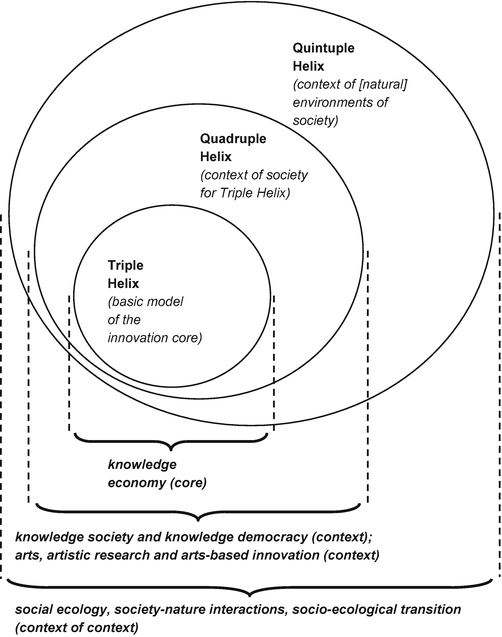The quadruple and quintuple innovation helix framework describes university-industry-government-public-environment interactions within a knowledge economy.
In innovation helical framework theory, first developed by Henry Etzkowitz and Loet Leydesdorff[1][2] and used in innovation economics and theories of knowledge, such as the knowledge society and the knowledge economy, each sector is represented by a circle (helix), with overlapping showing interactions.
The Carayannis and Campbell quadruple helix model incorporates the public via the concept of a ‘media-based democracy’,[9] which emphasizes that when the political system (government) is developing innovation policy to develop the economy, it must adequately communicate its innovation policy with the public and civil society via the media to obtain public support for new strategies or policies.[3]
In the case of industry involved in R&D, the framework emphasizes that companies’ public relations strategies have to negotiate ‘reality construction’ by the media.[3]
The quadruple and quintuple helix framework can be described in terms of the models of knowledge that it extends and by five subsystems (helices) that it incorporates; in a quintuple helix-driven model, knowledge and know-how are created and transformed, and circulate as inputs and outputs in a way that affects the natural environment.[2][4]
Socio-ecological interactions via the quadruple and quintuple helices can be utilized to define opportunities for the knowledge society and knowledge economy, such as innovation to address sustainable development, including climate change.[2]



Recent Comments